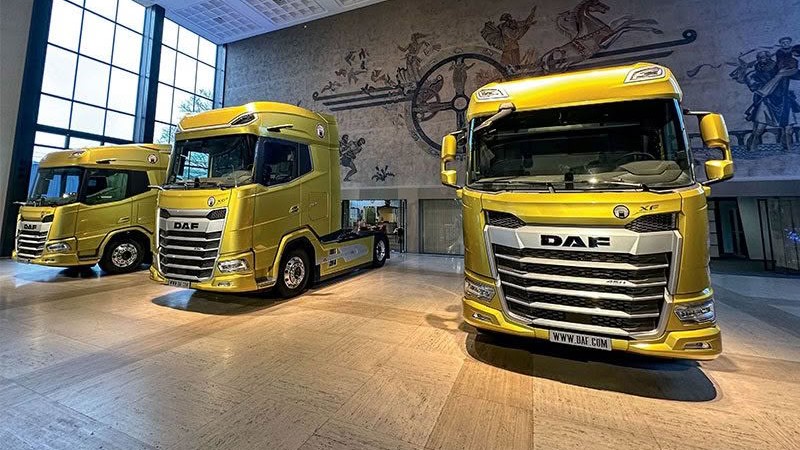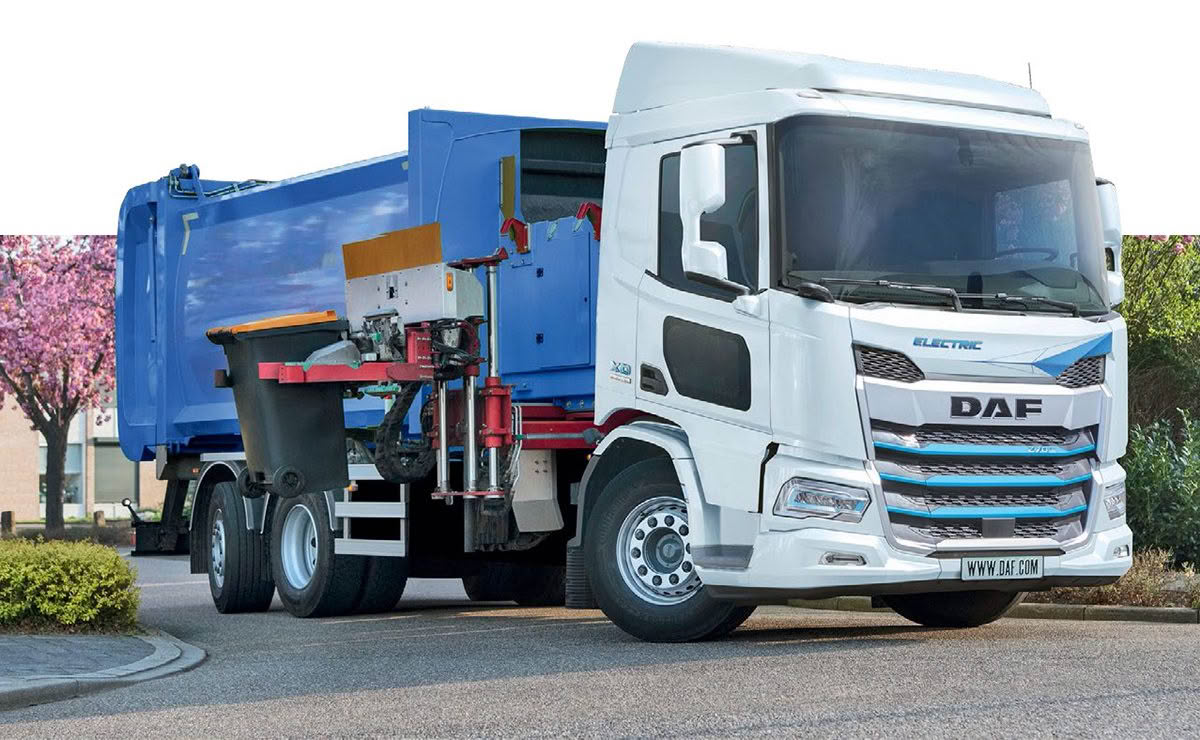All the horses in the race

An interview with DAF Trucks president Harald Seidel focuses on the Dutch truck manufacturer’s remarkable growth over the past decade, its ambition to grow in the rigids and vocational segment, and on being the first to apply the new European masses and dimensions regulations. In addition, DAF has a clear-cut vision when it comes to sustainable transport solutions.
DAF has developed into a leading European truck manufacturer. Last year, it built more than 70,000 medium and heavy- duty commercial vehicles, a record in its 95-year history.
In DAF Trucks president Harald Seidel’s own words, 2023 was “a wonderful and exciting year”, including highlights such as the production of the 50,000th New Generation model, the start of construction on the new PACCAR Parts Distribution Centre in Germany, and the launch of the New XD distribution truck.
“After winning the International Truck of the Year Award twice in a row, this year we also won three other awards in recognition of the industry-leading fuel efficiency and sustainability of our New Generation DAF vehicles. Something to be very proud of,” he adds.
Euro-7 – bigger fish to fry
Seidel says that DAF’s vision and mission have been redefined to include technology leadership, customer success and sustainable transport solutions – which goes further than just achieving the lowest CO2 emissions with its New Generation DAF trucks, he says.
“Developing and marketing alternative drivelines is a key priority. And, yes, new Euro-7 legislation has been announced, but that would mean a very big investment for a relatively small environmental gain. It is far more effective to replace the Euro-3, Euro-4 and Euro-5 vehicles on the road instead of pushing the industry towards the Euro-7 norm by the end of the decade when electrification will also come into play. We have bigger fish to fry,” he says.
“DAF has always been a frontrunner in sustainable transport solutions. In 2010, we were really ahead of our time with the first hybrid vehicle. In fact, we were even way too early,” says DAF’s president.
“However, we obtained extensive experience with electrification, which benefited the development of our New Generation DAF electric vehicles for which a brand-new assembly plant has been commissioned. With the delivery of the first of these new electric vehicles to customers this year, production will ramp up to thousands of vehicles per year.”

50,000 public charging stations needed
Despite growing interest from transport operators in electric trucks and the availability of BEV vehicles by OEMs, there are still major challenges to its high-volume adoption.
Seidel says: “Having BEV trucks available is only one part of the story. Availability of charging infrastructure and cost parity will be the key factors for success. We need massive investments in green energy infrastructure, and that requires a master plan at the European level.
“To give you an indication of what’s required: to meet the 2030 CO2 reduction goals set by the EU for the truck industry, we would need the same amount of green electricity as 17 million households. Three years later, we would need double that amount. And that’s only for the transport industry. Seven years from now, we are going to need 280,000 chargers, of which 50,000 will be public charging stations. The adoption curve of battery electric trucks by transport companies will depend on the speed of these infrastructure investments.
“DAF is committed and ready for zero-emission trucks. But to solve the chicken-and-egg scenario, we need a concerted effort with local governments and the energy sector to make it happen.”
Challenge too big to bet on one horse
‘A range of technologies for a range of applications’ is DAF’s credo when it comes to sustainable road transport. “Apart from battery electric trucks, DAF invests in hydrogen as a promising zero-emission technology. Hybrid technology is also interesting to de-risk the infrastructure challenges, when combined with HVO and e-fuels,” Seidel confirms.
“HVO (biodiesel made from waste products such as vegetable oil and waste fat) is ready to use in existing trucks. It supports a circular economy and brings an immediate 90% CO2 reduction benefit. Unfortunately, HVO does not count towards the 2030 CO2 targets for the truck industry.
“These kinds of inconsistencies in European legislation are not helpful. Fact is, we are going to need all available technologies to decarbonise road transport: HVO, hybrid, electric and hydrogen. The sustainability challenge is too big to bet on one horse; we need all the horses in the race,” he concludes.
Gianenrico Griffini is the editorial manager of the Italian publication, Allestimenti & Trasporti, and president of the International Truck of the Year jury.





